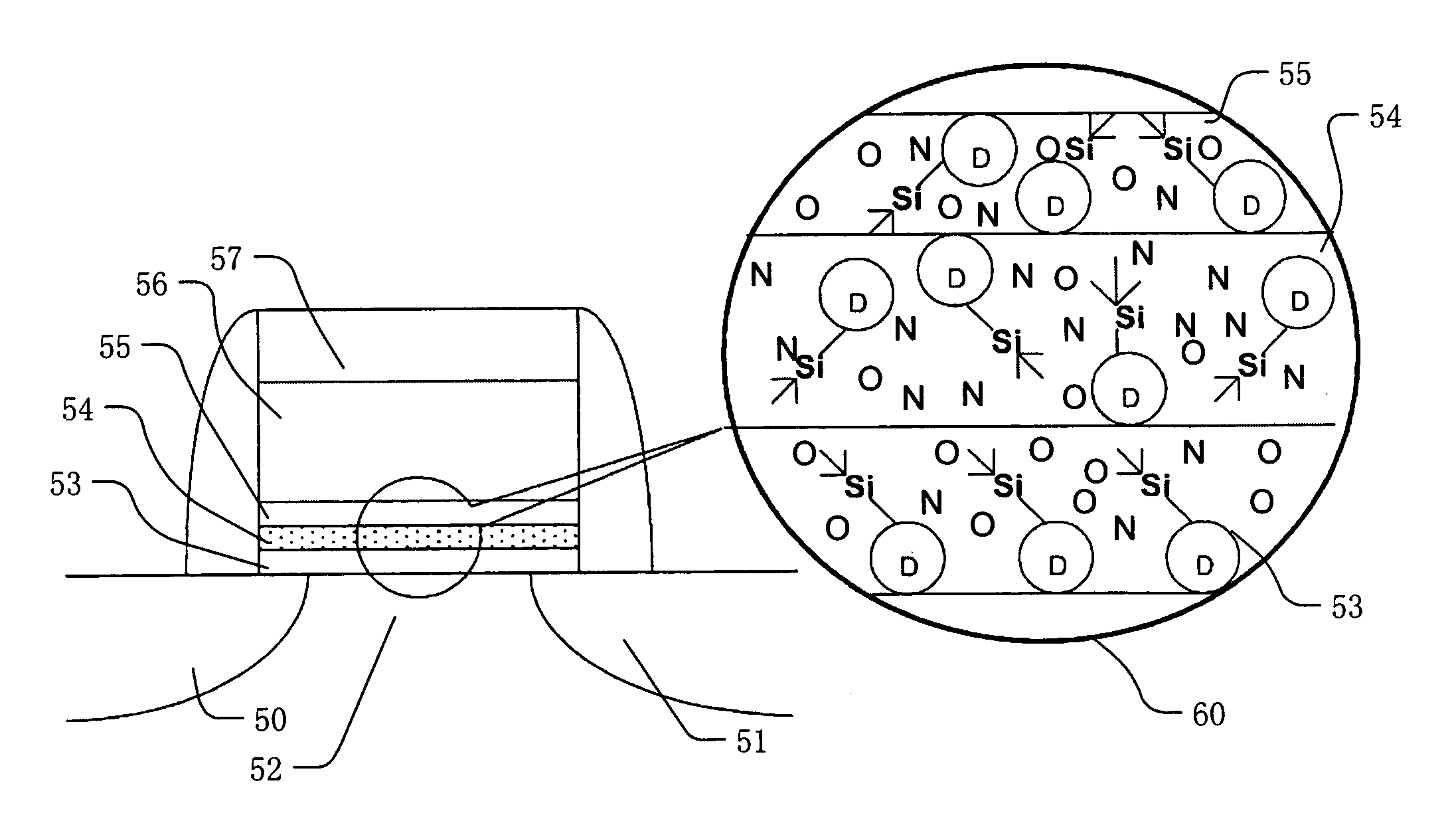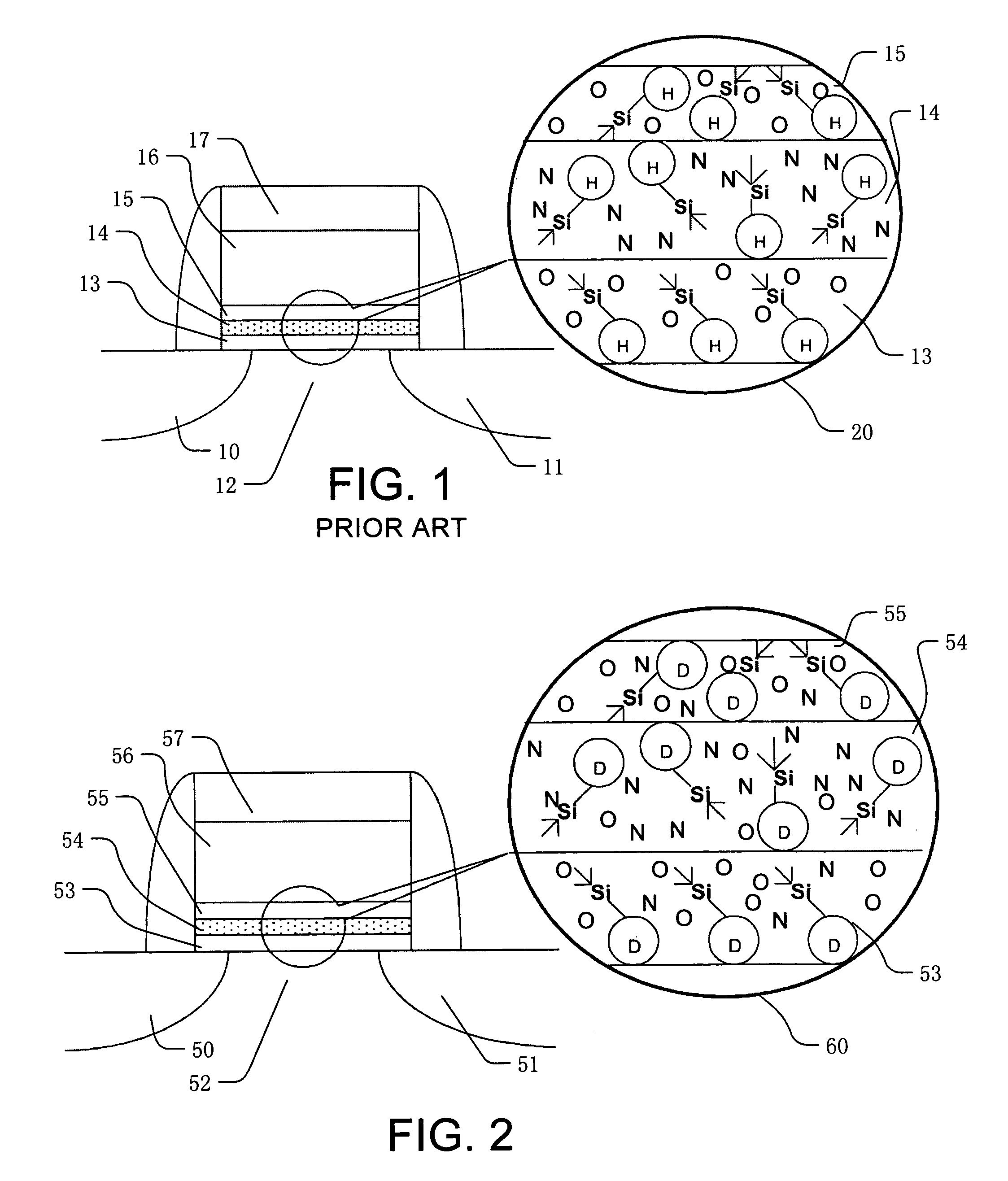Memory device and method of manufacturing including deuterated oxynitride charge trapping structure
a technology of deuterated oxynitride and memory device, which is applied in the direction of semiconductor devices, basic electric elements, electrical apparatus, etc., can solve the problems of significant source of charge retention problems, poor charge retention, and low threshold cell charge loss, so as to reduce the number of available dangling bonding sites and improve data retention characteristics. , the effect of reducing the number of hydrogen inclusions in the structur
- Summary
- Abstract
- Description
- Claims
- Application Information
AI Technical Summary
Benefits of technology
Problems solved by technology
Method used
Image
Examples
Embodiment Construction
[0018]A detailed description of embodiments of the present invention is provided with reference to the FIGS. 2, 3 and 4.
[0019]FIG. 2 provides a graphical representation of a memory cell based on a charge storage stack comprising deuterated oxynitride layers. The memory cell comprises a terminal 50 acting as a source, a terminal 51 acting as a drain and a channel region 52 in the substrate. A bottom dielectric layer 53 overlies the channel region 52 and portions of the source and drain terminals 50, 51. A charge trapping layer 54 overlies the bottom dielectric and a top dielectric 55 overlies the charge trapping layer 54. A gate electrode comprising a polysilicon layer 56 and a silicide layer 57 lie over the top dielectric layer 55. A small region of the bottom dielectric layer 53, charge trapping layer 54 and top dielectric layer are expanded heuristically in the region 60 on the drawing. Silicon atoms are shown schematically with four lines representing the valence electrons normal...
PUM
 Login to View More
Login to View More Abstract
Description
Claims
Application Information
 Login to View More
Login to View More - R&D
- Intellectual Property
- Life Sciences
- Materials
- Tech Scout
- Unparalleled Data Quality
- Higher Quality Content
- 60% Fewer Hallucinations
Browse by: Latest US Patents, China's latest patents, Technical Efficacy Thesaurus, Application Domain, Technology Topic, Popular Technical Reports.
© 2025 PatSnap. All rights reserved.Legal|Privacy policy|Modern Slavery Act Transparency Statement|Sitemap|About US| Contact US: help@patsnap.com



